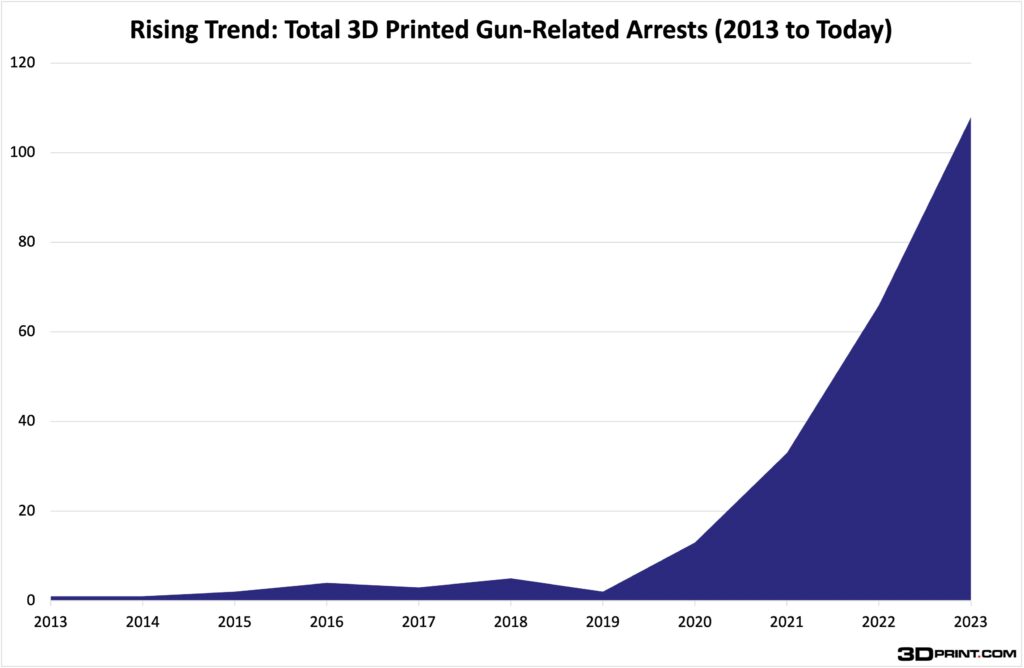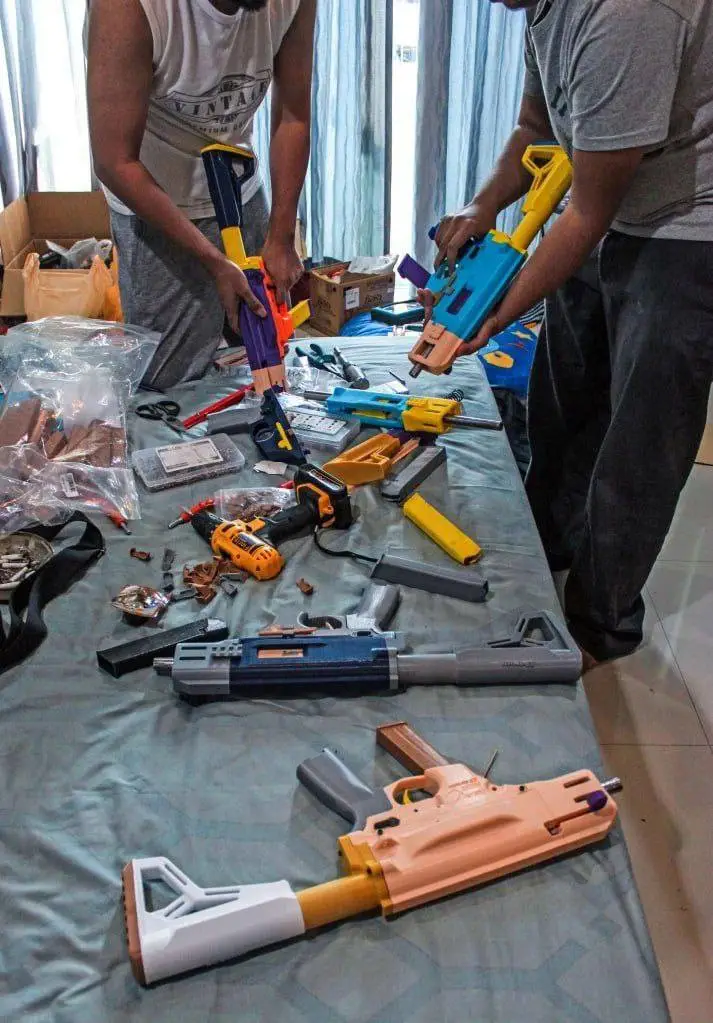When a German-Kurdish gun designer posted his designs for a semi-automatic pistol on DEFCAD, did he realize that his FGC-9 gun design would wind up being printed in huge numbers by rebels in Myanmar? By virtue of the distributed nature of the internet and the low cost of desktop 3D printers, that is exactly what happened.
3D Printing Firearms in Myanmar
In response to a military coup on February 1, 2021, civilian rebels in the nation have begun fighting the armed forces, known as the Tatmadaw, in an attempt to regain control of the country. In contrast to the official military, the rebels lack access to mass manufactured weapons. This has led them to turn to 3D printing.
JStark1809 released his FGC-9 (F**k Gun Control-9) design on DEFCAD in 2020. The weapon features upper and lower receivers, pistol grip, and stock that are all 3D printable. The barrel is designed to be made via electrochemical machining. Altogether, the device is estimated to have a single overhead cost of about $300 to $500, with an estimated $200 for the printer and $100 for the machining equipment. JStark1809 suggested that it took one-and-a-half to two weeks to build. Moreover, since JStark1809 posted the weapon—and it was shared on other like Odysee—others have improved the design to make it more customizable and printable, including a 3D printable trigger system for fire control.
The first footage of the 3D-printed FGC-9 gun (JStark’s gun) being used by anti-junta guerrillas in Myanmar against the military. Incredible. pic.twitter.com/DfyaxNBfy2
— Jake Hanrahan (@Jake_Hanrahan) July 20, 2022
This isn’t the first time that the civilians of Myanmar may have been exposed to 3D printing. MakerBot advertised the use of their systems to 3D print farming equipment in 2016. Reports of 3D printed weapons being used against the junta date back at least as far as December 2021, meaning that they have been battle-tested for at least a year-and-a-half. According to some reports, the guerrilla fighters have developed methods for producing the guns in mass, likely reducing costs and assembly time.
JStark’s Ideology
Revisiting the idea of whether or not JStark1809 believed his design would wind up in the hands of a rebel force, the fact of the matter is that he did. In a 2020 documentary by POPULAR FRONT, filmmaker Jake Hanrahan met up with the gunsmith, who told him that “to bear firearms is a human right. The government or the entity that has rule over you has an executive force. The police, the military—they have firearms. To be able to escape that injustice, [citizens] need to have that same force on an individual level.”
The following year, the Federal Criminal Police Office in Germany found JStark1809, a 28-year-old named “Jacob D.”, and raided his home. Two days later, he was found in his car in front of his parents’ home, dead of a heart attack. Though such an ailment is uncommon for someone of such a young age, the coroner ruled out foul play.
 The FGC-9 disassembled. Image courtesy of Wikipedia.
The FGC-9 disassembled. Image courtesy of Wikipedia.3D Printed Weapons and Gun Control
The story of the rebels in Myanmar brings up a number of salient points. One of them is the fact that 3D printed weapons have come to be powerful enough that they may be effective when used in guerilla warfare. As we have reported, DIY gunsmithing need not rely wholly on 3D printing to be effective and, in most cases, it is more useful in combination with other manufacturing technologies. However, as metal filament becomes more prevalent, the need to rely on other fabrication processes will be less necessary.
We also know that militaries and manufacturers are actively working on the ability to deploy 3D printing on the frontlines of war. One small firm, for instance, has developed an anti-drone weapon specifically for 3D printing. In Ukraine, 3D printed drones have proven to be useful tools, as well. In this way, the civil war in Myanmar serves as a field test for 3D printed guns and, in turn, may inform military planning globally.
Moreover, because the fight of the civilians in Myanmar is typically seen as a noble one—as are most stories of resistance against a military coup—this topic introduces a contradiction for some gun control advocates. Those who might stand on the side of the guerilla fighters might see the ability to manufacture weapons as necessary in a fight to restore democratic governance in the country. While many might not expect the same fate to befall a developed nation like the U.S., it is a possibility that would favor gun rights advocates. Therefore, there may be a middle ground of sensible regulation that both sides of the issue could potentially agree on.
Thanks to the dogged work of Senior Analyst Vanesa Listek, 3DPrint.com has been the only outlet in mainstream or trade media that has been keeping track of arrests related to DIY guns, reporting that they have doubled from 2022, now totaling 108 with the year only being half over. In most cases that we have recorded, ghost gun arrests have been part of larger criminal investigations and operations.
 Image courtesy of Vanesa Listek and 3DPrint.com.
Image courtesy of Vanesa Listek and 3DPrint.com.However, if legislation begins to target the manufacture of weapons outside of otherwise criminal activity, it could potentially result in a slippery slope that results in the regulation of personal 3D printing. It may seem unlikely now, but dialectic playing out between increased provocation of political reactionaries involved in the January 6 protests in the U.S. and the response of repressive State forces could snowball to such a point in the future.
In the face of future resource scarcity, such a scenario would limit the means of production to government and corporate bodies, rather than individuals and communities. Therefore, it’s important to keep abreast of the field of 3D printed firearms regardless of one’s political leanings.
Image courtesy of Jake Hanrahan on Twitter, unless otherwise stated.
Subscribe to Our Email Newsletter
Stay up-to-date on all the latest news from the 3D printing industry and receive information and offers from third party vendors.
Print Services
Upload your 3D Models and get them printed quickly and efficiently.
You May Also Like
Metal Powder Supplier Elementum 3D Added to $46B Air Force Contract
Elementum 3D, a Colorado-based developer and supplier of metal powders used in additive manufacturing (AM), announced that the company has been added to the vendors list in the fourth on-ramp...
Ursa Major Lands $28.6M AFRL Deal for 3D Printed Draper Engine Flight Demo
The US Air Force Research Laboratory’s (AFRL’s) Rocket Propulsion Division at Edwards Air Force Base has awarded a $28.6 million contract to Ursa Major for follow-on work related to the...
3D Printing Financials: Rocket Lab’s Record-Breaking Year and Over 20 Launches Coming in 2025
Rocket Lab (Nasdaq: RKLB) closed 2024 with its best year yet. The company launched more rockets, signed more contracts, and expanded deeper into spacecraft and satellite production than ever before....
US Air Force Taps Beehive to Study 3D Printed Jet Engines
Propulsion 3D printing firm Beehive Industries secured a contract from the U.S. Air Force Life Cycle Management Center through SOSSEC. SOSSEC is a company that manages Other Transactions Authority (OTA)...



































